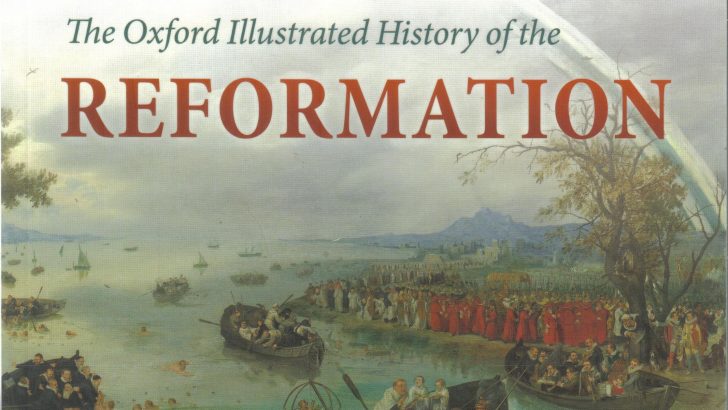The Oxford Illustrated History of the Reformation
edited by Peter Marshall (Oxford University Press, £18.99pb RPP)
Peter Marshall, the editor of this book, is professor of history at Warwick and on the board of the journal British Catholic History. With six colleagues he provides an approachable résumé, very well illustrated with vivid and relevant images, in a paperback reissue for the 500th anniversary of the Reformation
The editor says that “the aim of the current volume is to bring out some of the ways in which over recent years our understanding of the Reformation has become more complicated (and therefore more interesting), while retaining a clear and coherent perspective on the balance between continuity and change”.
It is essential for such a book that the text be both readable and authoritative, and this is certainly the case here. But the illustrations are not mere decorations in a book of this kind. They are a very important elements in their own right.
It is not merely a matter of seeing portraits of the people involved like the Popes, the princes and the preachers. One can also see the places and the way of life in these centuries, but also the ways of propaganda through the new printing press by way of graphic images – the vicious political cartoons of those days are often excoriating.
It is often said that the introduction of the printing press made the Reformation, but it was a medium used by both Protestants and Catholics, as can be seen in these pages. It is often suggested that Catholics were for censorship, while the Protestants were for liberty, but this was not quite the case. Catholic books could not circulate in Protestant England, while a little earlier, when the Papacy was in Avignon, there was no censorship of books in the Pope’s enclave.
The Big Wind
by Beatrice Coogan with a new introduction by Tim Pat Coogan (Head of Zeus, £8.99)
This novel was first published in 1969 when it achieved a huge success, both in Europe and North America. There was even talk of a film version being made, but that came to nothing. The novel opens on the ‘Night of the Big Wind’, January 6, 1839. Famously this date was later of great importance when in 1909 the state pensions came in and many people bereft of birth certificates (which date only from the 1860s) used it as the landmark date to prove their age.
It tells the life of Sterrin O’Carroll born in Kilsheelin Castle as those wild winds winds wrecked the country. Her love for Ireland and for a servant man Young Thomas provide the theme of the books which also reveals the course of Irish history from the time of O’Connell through the Famine and the Land War to a new century, and the rise of modern Ireland. 03
Definitely a book to soak in on the beach in the coming weeks of holiday. In the US it was later issued as Flower of the Storm derived from the Gaelic meaning of Sterrin, with quite a racy cover – here, however, the theme of Ireland’s national destiny is happily restored. Perhaps now it might provide material for a TV mini-series.
The novel was like some epic tale, but closer to Gone with the Wind than to The Betrothed. Many who have only the vaguest memories of the enjoyment they got from this “great read” will be delighted to see it again in print, this time with a preface by the author’s son, the editor and writer Tim Pat Coogan.
What that preface has to say about the author, her life and marriage to Garda Commissioner Eamonn Coogan, later a TD, and her heroic struggle to rear and educate her family after his early death in 1948, as well as build a career of her own in several fields, is of great interest. It struck this reviewer that in this material of his family and childhood Tim Pat has the germ of a great novel of his own.
(A decade after this book, Beatrice Coogan published a very different, more personal book, called Miracles at Knock. Perhaps that too might now come back into print.)



